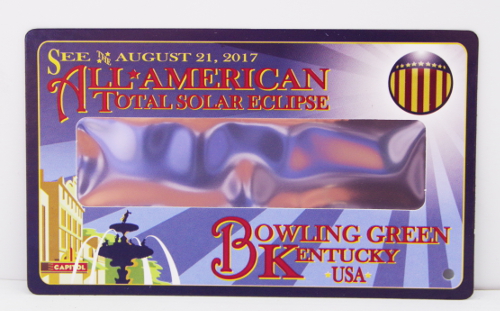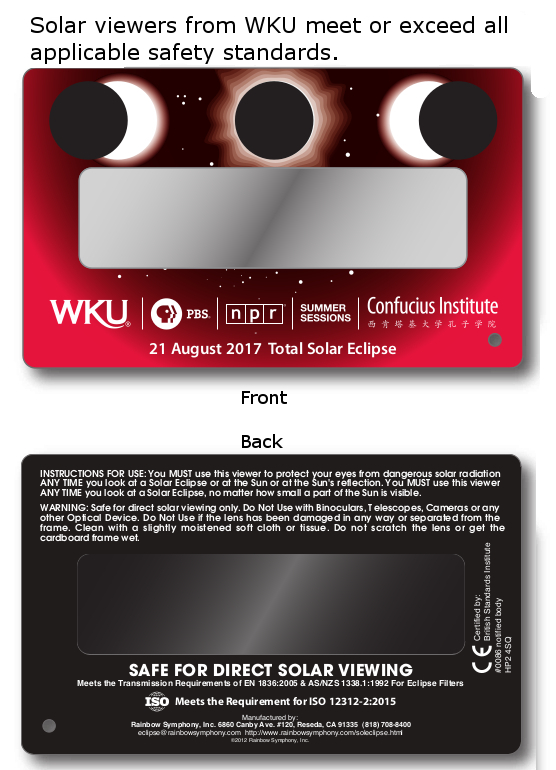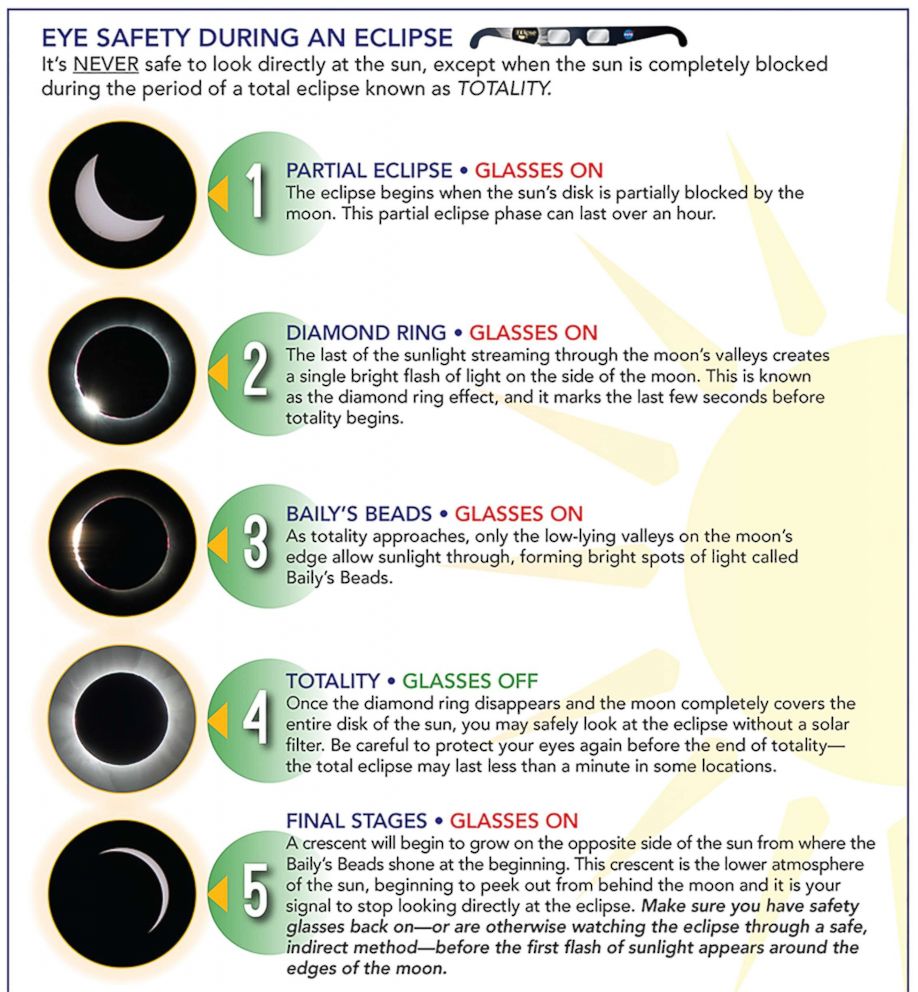Eclipse Eye Safety
Eye Safety
To insure everyone enjoys the wonder of a total solar eclipse in safety, it is important to remember to never look directly at the Sun! Do not look at the Sun with just your eyes, with binoculars, or with telescopes....anything that magnifies the light puts your eye at risk of permanent eye damage. While there are appropriate filters for both binoculars and telescopes, these should ONLY be used by those familiar with the equipment. A total solar eclipse is easy to experience with just your eyes and appropriate eye protection.
How to View the 2017 Solar Eclipse Safely
Como Ver el Eclipse Solar del 2017 con Seguridad
From before the eclipse begins all the way to totality, proper eye protection must be used. Once the eclipse is total, the Moon has completely blocked the Sun. Totality is then safe to look at because you are looking at the Moon, not the Sun. When the first stray beam comes back out from behind the Moon, look away and again use proper eye protection. If your location does not experience totality, you will always need to use eye protection or use safe indirect viewing methods.
There are many safe ways to view the partial phases of the eclipse. One is with safe solar viewers, available both from the Hardin Planetarium and many online stores. These are ONLY for visual use with just your eyes! Never use these with any other optical aids.
Note: All of the viewers either provided or sold by the Hardin Planetarium meet ALL applicable safety standards. Our supplier is Rainbow Symphony, all of whose products meet the standards.


Please read How to Tell if Your Eclipse Glasses or Handheld Solar Viewers are Safe for more information on safe viewers.


Some of the links on this page may require additional software to view.

